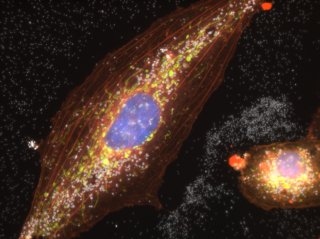Emerging Materials and Technology

Innovations in chemical and material design are rapidly changing the landscape of industrial and consumer products as novel materials. Materials such as engineered nanomaterials and biotechnology products are incorporated into products to enhance their performance. This research provides methods and tools to enable EPA to evaluate emissions, transformation, potential exposure and impacts of these types of materials.
Research Efforts
Biotechnology Products
EPA researches novel products of synthetic biology (biotechnology), or organisms that are genetically or metabolically re-engineered with new abilities for useful purposes (e.g., biopesticides, microorganisms for bioremediation, insect resistant plants, or genetically engineered mosquitos to reduce mosquito populations). The scale, scope, and complexity of synthetic biology products has increased greatly over the past decade. EPA is mandated to make prompt regulatory decisions on these products. When these products have unique properties and uncertain risks, they pose additional regulatory challenges.
- Recent Biotechnology Research and Publications
- EPA Science to Achieve Results (STAR) Grantee Research Product Results: Assessment Tools for Biotechnology Products
Nanomaterials
EPA studies nanomaterials, characterized by their tiny particle size, measured in nanometers, including nanosilver, carbon nanotubes, 3D printer emissions, quantum dots (i.e. semiconductor particles), and nano-pesticides. They require specialized approaches for evaluating hazard and exposure to provide an evaluation of the environmental impacts of their use. Collaborations are ongoing with the US Consumer Safety Product Commission and the National Institute for Occupational Safety and Health on human exposure to nanomaterials used in consumer products.
- Recent Nanomaterials Research and Publications
- Report: Research Needs for Novel Engineered Microbes and Biopesticides Intended for Open Release to the Environment
Tools and Resources
- WASP 8: Dynamic compartment-modeling program for aquatic systems, updated to accommodate nanomaterials.
- CompTox Chemicals Dashboard: Provides chemistry, toxicity, and exposure information for over a million chemicals.
